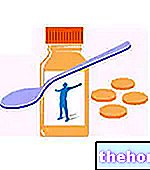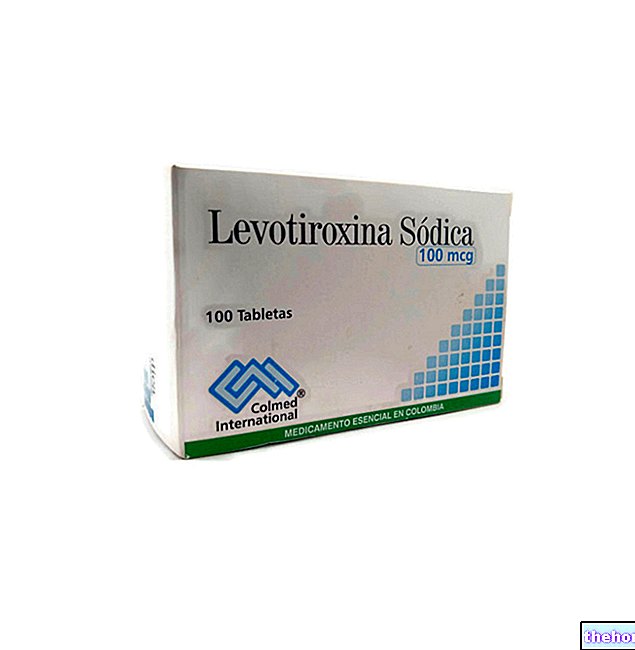
What is Filgrastim Hexal
Filgrastim Hexal is a solution for injection or infusion (drip into a vein) in a pre-filled syringe that contains the active substance filgrastim (30 or 48 million units).
Filgrastim Hexal is a 'biosimilar' medicine, which means it is similar to a biological medicine already authorized in the European Union (EU) that contains the same active substance (also called 'reference medicine'). The reference medicine for Filgrastim Hexal is Neupogen For more information on biosimilar medicines, see the questions and answers by clicking here.
What it is used for
Filgrastim Hexal is used to stimulate the production of white blood cells in the following situations:
- to reduce the duration of neutropenia (low levels of neutrophils, a type of white blood cell) and the incidence of febrile neutropenia (neutropenia with fever) in patients undergoing cytotoxic (cell-destroying) chemotherapy (cancer treatment);
- to reduce the duration of neutropenia in patients undergoing treatment to destroy bone marrow cells prior to a bone marrow transplant (as occurs in some leukemia patients) when they are at risk of severe and long-term neutropenia;
- to increase neutrophil levels and reduce the risk of infection in patients with neutropenia who have a history of severe and repeated infections;
- to treat persistent neutropenia in patients with advanced human immunodeficiency virus (HIV) infection, with a view to reducing the risk of bacterial infections when other treatments are inadequate.
Filgrastim Hexal can also be used in patients who are about to donate stem cells for transplantation to help release these cells from the bone marrow.
The medicine can only be obtained with a prescription.
How is Filgrastim Hexal used?
Filgrastim Hexal is administered by subcutaneous injection or intravenous infusion. The method of administration, dosage and duration of treatment depend on the reason for its use, the patient's body weight and response to treatment. Filgrastim Hexal is usually given in a specialized treatment center, although patients who are inoculated under the skin can inject it themselves if they are properly trained. For further information, see the package leaflet.
How does Filgrastim Hexal work?
The active substance in Filgrastim Hexal, filgrastim, is very similar to a human protein called granulocyte colony stimulating factor (G-CSF). Filgrastim is produced by a method known as 'recombinant DNA technology': it is made by a bacterium that has been grafted onto a gene (DNA), which makes it capable of producing filgrastim. The substitute works similarly to naturally produced G-CSF by stimulating the bone marrow to produce more white blood cells.
How has Filgrastim Hexal been studied?
Filgrastim Hexal has undergone studies to demonstrate its similarity to the reference preparation, Neupogen.
Four studies looked at the levels of neutrophils in the blood in a total of 146 healthy volunteers who were given Filgrastim Hexal or Neupogen. The studies looked at the effects of single and repeated administration of various doses of the medicine, administered by subcutaneous injection or intravenous infusion. The main measure in these studies was the neutrophil count during the first 10 days of treatment.
What benefit has Filgrastim Hexal shown during the studies?
Over the course of the studies Filgrastim Hexal and Neupogen produced similar increases in neutrophil counts in healthy volunteers. This was considered sufficient to demonstrate that the benefits of Filgrastim Hexal are comparable to those of the reference medicine.
What is the risk associated with Filgrastim Hexal?
The most common side effect seen with Filgrastim Hexal (in more than 1 in 10 patients) is musculoskeletal pain (pain in the muscles and bones). More than 1 in 10 patients may experience other side effects, depending on the disease. which Filgrastim Hexal is used for. For the full list of side effects reported with Filgrastim Hexal, see the package leaflet.
Filgrastim Hexal must not be used in people who may be hypersensitive (allergic) to filgrastim or any of the other ingredients.
Why has Filgrastim Hexal been approved?
The Committee for Medicinal Products for Human Use (CHMP) considered that, based on the requirements of EU legislation, Filgrastim Hexal has demonstrated similar quality, safety and efficacy characteristics to Neupogen. The CHMP is therefore of the opinion. that, as in the case of Neupogen, the benefits outweigh the identified risks. The Committee recommended that Filgrastim Hexal be given a Marketing Authorization.
Other information about Filgrastim Hexal:
On 06 February 2009, the European Commission granted Hexal AG a "Marketing Authorization" for Filgrastim Hexal, valid throughout the European Union.
For the full version of Filgrastim Hexal's EPAR click here.
Last update of this summary: 12-2008
The information on Filgrastim Hexal published on this page may be out of date or incomplete. For a correct use of this information, see the Disclaimer and useful information page.




























